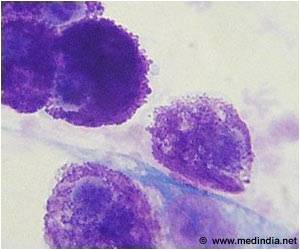In HIV patients on anti-retroviral therapy (ART), chronic hepatitis B or C co-infection is linked to a higher incidence of non-Hodgkin’s lymphoma (NHL).
Highlights
- Global prevalence of HIV infection is rising since persons on anti-retroviral treatment are living longer.
- Incidence of non-Hodgkin’s lymphoma in persons with HIV infection is nearly ten times higher compared to normal population.
- Certain infections such as hepatitis B (HBV) and hepatitis C (HCV) infections are also associated with an increased risk of non-Hodgkin’s lymphoma in immunocompromised persons.
- Risk of non-Hodgkin’s lymphoma shown to be higher in HIV persons co-infected with HBV or HCV compared to non-infected persons.
Findings of the Study
The investigators analyzed 18 out of 33 cohorts from the Collaboration of Observational HIV Epidemiological Research Europe (COHERE) to determine if chronic HBV and HCV co- infection are associated with a higher occurrence of non-Hodgkin's lymphoma. The study initially included 52,479 ART-naïve patients, 40,219 of whom later began ART.Proposed Mechanisms of NHL in HIV infections
With anti-retroviral therapy (ART), survival of HIV infected persons has considerably improved. Additionally, with restoration of immunity following ART, the incidence of opportunistic infections and Kaposi sarcoma has also come down. Unfortunately, the expected decrease in AIDS related lymphomas has not decreased, and currently, HIV associated cancers, including NHL’s are becoming the leading causes of death in AIDS patients.Currently, it is hypothesized that majority of AIDS-associated lymphomas (NHL) are caused by human γ-herpes viruses, mainly Kaposi sarcoma-herpes virus (KSHV) and to a lesser extent by Epstein-Barr virus (EBV) infections. The growth of these cancers is attributed to loss of immunoregulation due to immunosuppression induced by HIV infection.
A lot of recent studies have evaluated the role of anti-herpes treatment in the prevention and treatment of AIDS-related lymphomas. Other modalities of treatment emerging include therapies targeting viral latency to kill infected tumor cells.
Proposed Mechanisms of NHL in HBV and HCV infections
Hepatitis B and C are hepatotropic (tendency to infect liver) viruses, and are associated with an increased risk of development of NHL, compared to the general population.These include:
- Chronic antigenic stimulation of B cells by the viruses, followed by uncontrolled B-cell proliferation.
- Interaction between the HCV-E2 receptor and CD 81 on B cells leading to polyclonal activation of naïve B cells.
- Direct infection of B cells by the virus.
Lessons from the Study
It is probable that the mechanisms elaborated in the above paragraphs may exist and act in synergy in HIV patients co-infected with HBV and/or HCV, contributing to a much higher risk of development of NHL in this population.The researchers conclude that early diagnosis and treatment of HIV infection should be combined with routine screening for chronic HBV an HCV infection. This is critical to further decrease non-Hodgkin's lymphoma associated morbidity and death in HIV-infected persons.
References:
- Hepatitis viruses and non-Hodgkin lymphoma: epidemiology, mechanisms of tumorigenesis, and therapeutic opportunities - (http://www.bloodjournal.org/content/117/6/1792?sso-checked=true)
- Newly Emerging Therapies Targeting Viral-related Lymphomas - (https://www.ncbi.nlm.nih.gov/pmc/articles/PMC4041592/)
- The Need for Investigations of Prophylactic Regimens to Prevent AIDS-Associated Non-Hodgkin's Lymphoma - (http://cid.oxfordjournals.org/content/30/5/762.full)
















